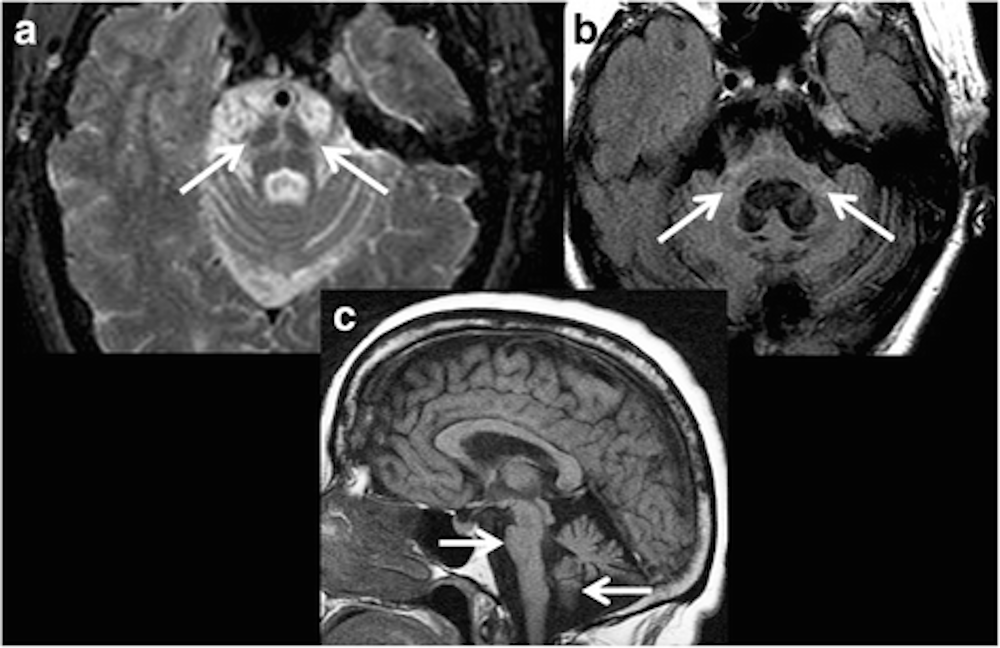Kamptokormie
Camptocormia (bent spine syndrome or cyphose hystérique) is a rare syndrome characterized by involuntary flexion of the thoracolumbar spine with weight-bearing which reduces when laying down, and is due to isolated atrophy of the paraspinal muscles.
Epidemiology
In a small case series (n=16), 2/3 patients Parkinson disease, however camptocormia is only seen in ~10% of Parkinson patients .
Associations
These conditions may be associated :
- Parkinson disease
- dystonic disorders
- neuromuscular disorders
- inclusion body myositis
- Graves disease
- may be drug-induced
- as part of a paraneoplastic syndrome
- trauma
- multisystem atrophy
- Alzheimer disease
- chronic inflammatory demyelinating polyneuropathy
In just under half of patients the condition may be idiopathic
Clinical presentation
Marked thoracolumbar kyphosis, usually worse when upright (vs supine) or ambulatory. Back pain is common however a significant number of patients are asymptomatic .
Pathology
Recent research suggests that - at least in Parkinson disease - the problem originates centrally in the brain, and not at the level of the muscles themselves. The condition may arise due to a dysfunction in proprioception .
Radiographic features
MRI
Diffuse isolated atrophy and fatty replacement of the paraspinal muscles, with high T1 and T2 signal which suppresses on fat-saturated sequences
History and etymology
Camptocormia was first described in 1815 by Earle, and the original case descriptions of the shaking palsy in 1817 by James Parkinson (1755-1824) included this phenomenon .
Siehe auch:

 Assoziationen und Differentialdiagnosen zu Kamptokormie:
Assoziationen und Differentialdiagnosen zu Kamptokormie:

